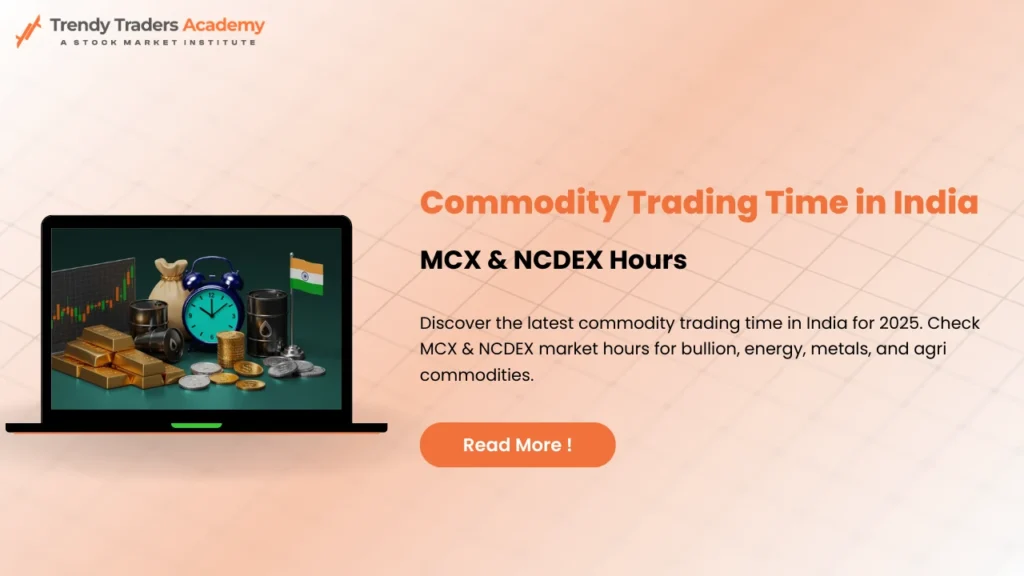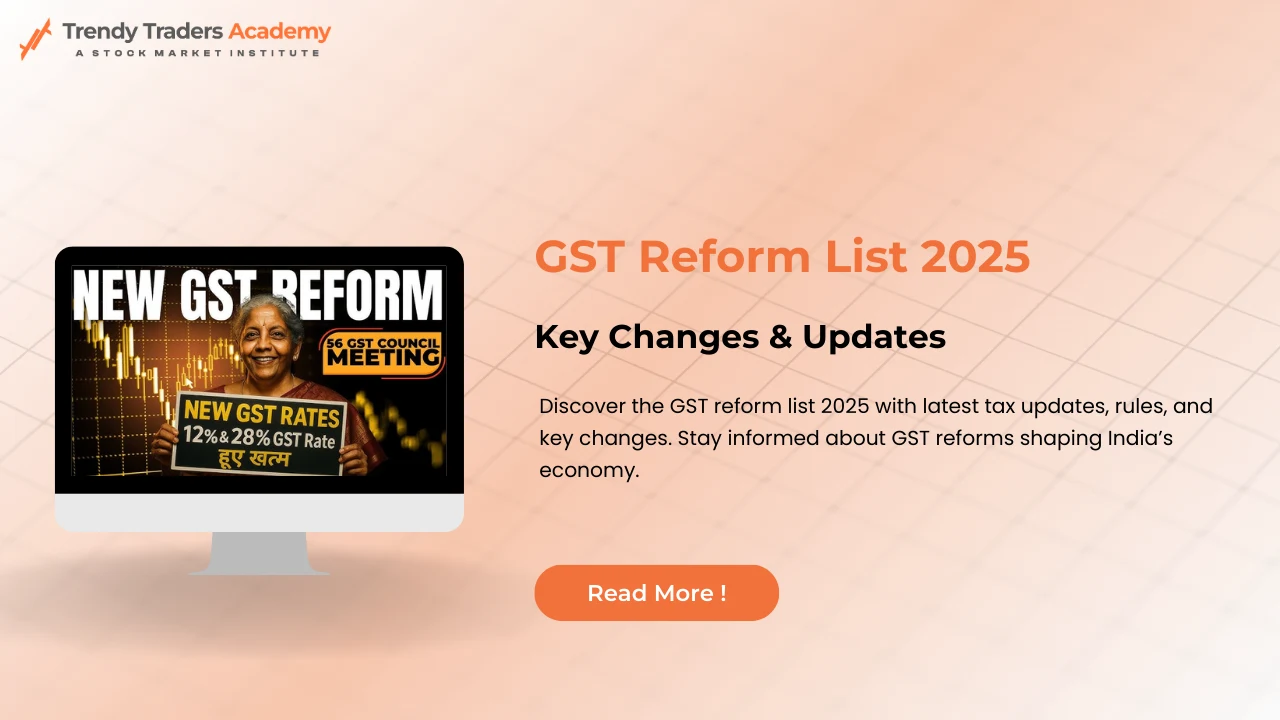
Commodity Trading Time in India: Learn When to Trade Like a Pro — A Story and Guide
Meet Raj: A Curious New Trader Exploring India’s Commodity Market Clock
Raj lives in Jaipur. He wants to begin commodity trading after hearing stories from cousins who made small fortunes in gold and oil futures. But Raj is puzzled—he hears terms like commodity trading time in India and wonders why trading can’t happen whenever he wants.
One afternoon, Raj visits a local trader’s office. Surrounded by buzzing screens, he sees the market clock counting down trading sessions in Mumbai. He learns that Indian commodity markets have carefully split their trading day, matching when the busiest buyers and sellers come online locally and in global hubs. Then he decides he wants to learn what is commodity trading
He realizes trading commodities isn’t like buying vegetables at the market: timing matters, and understanding it can make or break his trades.
What is Commodity Trading? Raj’s Simplified Lesson
Raj is told that commodity trading in India means exchanging contracts—not the physical goods. Think of these contracts as tickets representing ownership or the right to buy/sell resources later at agreed prices.
For instance, purchasing a gold futures contract means you agree to buy gold at a set price on a future date. If gold’s price rises, you benefit by selling this contract at a higher price before expiry.
Thus, commodity trading in India is essentially a bet placed on expected price movements of natural resources like metals, energy products, or crops.
The Puzzle of Hours in Commodity Trading in India Solved
Through conversations, Raj learns Indian markets revolve around two players: MCX and NCDEX. Their trading day isn’t one continuous session but divided across several blocks.
Raj’s Market Clock Paints the Picture | Time in India (IST) | Why This Works For Traders |
“Market Sunrise Buzz” | 9:00 AM to 11:30 AM | The ocean of buyers and sellers wakes—volumes surge. |
“Midday Market Calm” | 11:30 AM to 1:30 PM | A lunchtime lull—fewer participants feel the market’s pause. |
“Afternoon Action Time” | 1:30 PM to 3:30 PM | The tide picks up with more orderly flows. |
“Global Connect Evening” | 5:00 PM to 11:30 PM | Indian investors link arms with New York and London—prices react worldwide. |
Raj notices this structure isn’t random but a bridge joining India’s traditional workday and the worldwide commodity ecosystem.
Development of the Commodity Market in India
Raj decides to test trading gold futures. Instead of randomly logging in, he aligns his trading to these sessions.
- He wakes early to engage during the “Market Sunrise Buzz” when the markets are lively and price movements show conviction.
- He avoids heavy trading during the “Midday Market Calm,” using this time for research.
- During the “Global Connect Evening,” Raj follows international news because price swings in crude oil and precious metals often originate from events in foreign countries.
By focusing on these windows, Raj’s trades become more timely and effective.
Raj’s 3 Golden Rules for Navigating Commodity Trading Time
- Observe The Market Clock Like the Stock Exchange Does: Know when the roads (sessions) are busiest before setting out.
- Trade Smart — Don’t Trade All Day: Less can be more when you pick the right window.
- Sync Indian Hours with Global Markets: Some big moves happen overseas—don’t miss out on the evening session’s pulse.
Raj’s Trading Session Strategy Made Simple
Session | Trivia for Raj | Ideal Trading Approach |
Morning Market Sunrise | “Like opening ceremonies” | Spot trends and volume surges, enter early |
Calm Midday Gap | “It’s the market’s siesta” | Review, prepare strategies, avoid risks |
Afternoon Orderly Flow | “Steady river after the siesta” | Manage positions, lock in profits |
Evening Global Pulse | “Market’s international tempo” | Monitor global news, respond smartly |
Why Knowledge of Commodity Trading Time Matters More Than Price Alone
People often fixate on price charts or tips but ignore the immutable fact: without trading at the right time, your price predictions may be less effective. The market’s heartbeat is its timing—liquidity, volatility, and price efficiency peak during set hours. Trying to trade when those pulses fade can mean higher risk and weaker execution.
Trading at times of active sessions includes being part of a crowd of larger audience, resulting in much more fairer and transparent discovery of price. On the other hand, taking trades during off-peak hours or illiquid periods that lead to slippage, larger spreads, and unpredictable swings in price- risks that beginners should refrain from making by avoiding them
Additionally, the timings synchronize Indian markets with the dynamics of global trade, including major markets such as New York, London and SIngapore. This synchroniztion makes sure that traders in India are aware of international price swings – an important consideration for commodities such as crude oil and gold, where world events have a major impact.
Bonus Tips: Navigating Holidays and Unexpected Market Events
The Indian commodity market calender can change due to festival holidays in India such as Diwali, Eid or national holidays. In addition to that are the unexpected events that happen on a occasional basis, such as glitches in technicality and regulatory announcements resulting in a dynamic environment. Raj learns that :
- Watching the official MCX and NCDEX calendars keeps him ahead of closures.
- Being prepared on a mental basis for lower liquidity near holidays to avoid panic during decision making.
- Tracking global geopolitical events and staying updated helps one anticipate sudden shifts and movements in the market.
This proactive approach aids Raj in being calm, composed and clear-headed, thereby converting market unpredictability into a calculated opportunity.
Conclusion: Time Your Commodity Trades Like Your Favorite Show’s Big Scene
Raj’s journey from confusion to confidence shows that knowing commodity trading time in India is your secret passage to smarter markets. It aligns your trades with moments of highest action and global relevance.
One must become a master of timing, stick with their knowledge and strategy, and the commodities trading will be a purposeful, efficient, and enjoyable process.
One must begin their trading day informed and in sync with the rhythm of the market, as their success depends on it.
Also Read : Best AI Stocks In India For Long Term
FAQ'S
Can I trade commodities anytime?
No, Indian exchanges open only during fixed sessions.
Why is the evening session important?
It links Indian trading to global price moves, critical for metals and energy.
Do prices change after market closes?
Prices update only during open hours but gaps can happen at next open.
When should I avoid trading?
Avoid last minutes of sessions when liquidity drops sharply.
Are holidays the same for stock and commodity markets?
Mostly yes, but one must look at exchange calendars to be sure.











